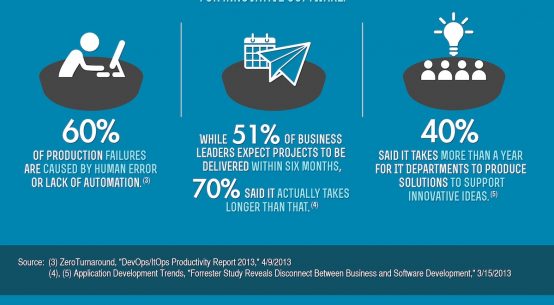
Many Agile and DevOps teams are successfully reducing software delivery cycle times and improving product quality, but their work doesn’t always align with business objectives because CIOs and IT portfolio managers lack the visibility they need to ensure business and product alignment. Although modern software tools generate a lot of data and more of them are providing analytics capabilities, the information needs to be available at different levels of abstraction to be of strategic value to the organization.
“Companies don’t always appreciate the impact of Agile,” said Malcolm Isaacs, senior researcher at Hewlett Packard Enterprise (HPE). “Agile and DevOps are increasingly prevalent in enterprises, but management is having a difficult time managing software products consistently.”
HPE Application Lifecycle Management (ALM) Octane with HPE Project and Portfolio Management (PPM) provide an integrated, open management platform for all artifacts, so executives can make better decisions about bringing software to market.
Manage risks more effectively
Continuous integration and continuous delivery are becoming more popular as enterprises attempt to use software as a competitive weapon. Faster software delivery is a good thing as long as it doesn’t add risk.
“Today’s portfolio managers have to oversee and synchronize multiple development projects, which include both agile projects and waterfall projects,” said Isaacs. “How do you do that while minimizing risk? How do enterprise architects enforce compliance with various standards across the organization?”
In the past, we knew who was in charge of standards compliance at the data access, business, service and presentation layers. However, when teams are organized around features, it’s more difficult to identify the people who are responsible for enterprise-wide compliance.
“It’s really hard for an enterprise architect to ensure compliance across the organization when every team is managing their own pipelines, using different tools, and gathering different metrics,” said Isaacs. “There’s no uniform way of evaluating teams’ performance across the organization.”
There’s no lack of data, but disparate data formats still prevent tools from sharing information despite APIs and traditional ALM tools. HPE PPM together with ALM Octane overcomes those limitations to provide complete portfolio-level views. They also provide drill-down capabilities so users can understand the current status of a release or a DevOps pipeline.
“We’re helping to enable enterprise agility,” said Isaacs. “One of the ways we’re enabling this is by giving you a management system that integrates with application lifecycle management and software development tools and makes sense of everything. Portfolio managers are using that information to
make strategic decisions, allocate budget and resources, and track the status of their decisions and optimize them further.”
Notably, HPE PPM with ALM Octane provides end-to-end visibility and traceability across Agile, Waterfall and hybrid projects to provide comprehensive and reliable enterprise-level views of software development activity.


